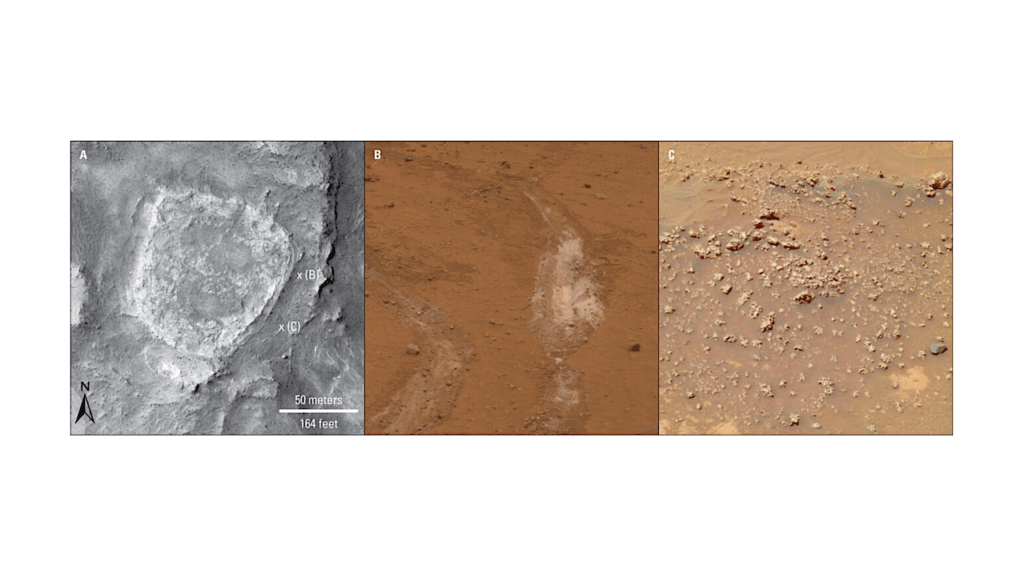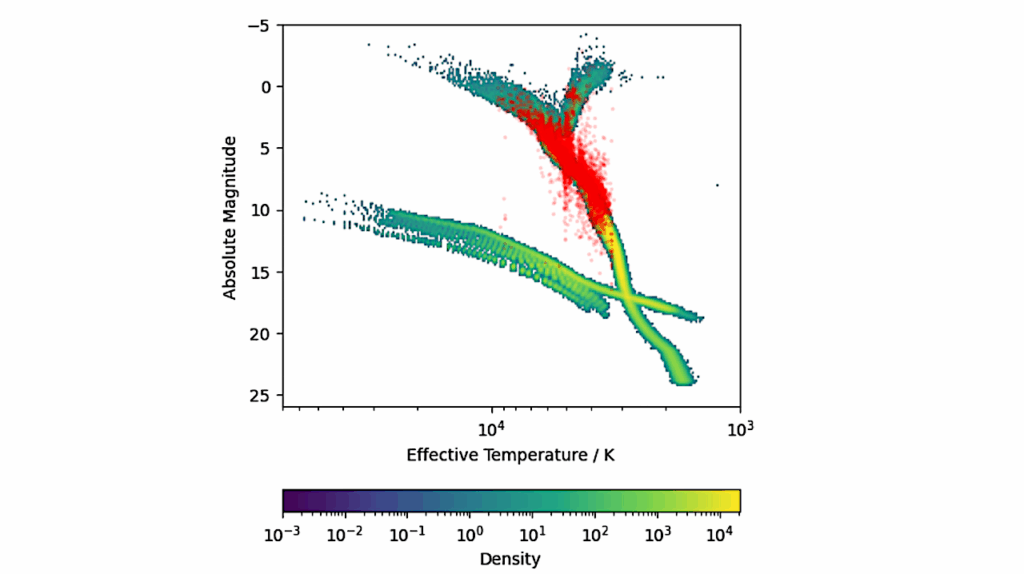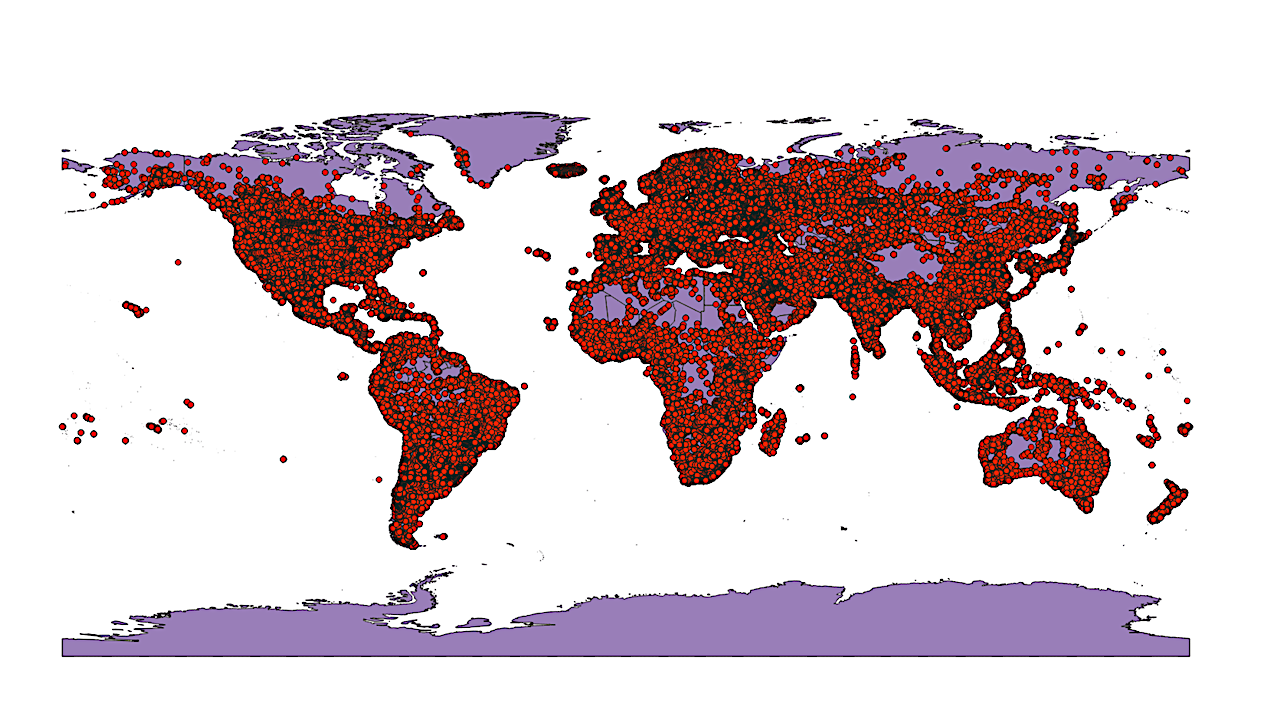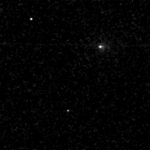Now Reading: Imaging Low-mass Planets Within The Habitable Zones Of Nearby Stars With Ground-based Mid-infrared Imaging
-
01
Imaging Low-mass Planets Within The Habitable Zones Of Nearby Stars With Ground-based Mid-infrared Imaging
Imaging Low-mass Planets Within The Habitable Zones Of Nearby Stars With Ground-based Mid-infrared Imaging
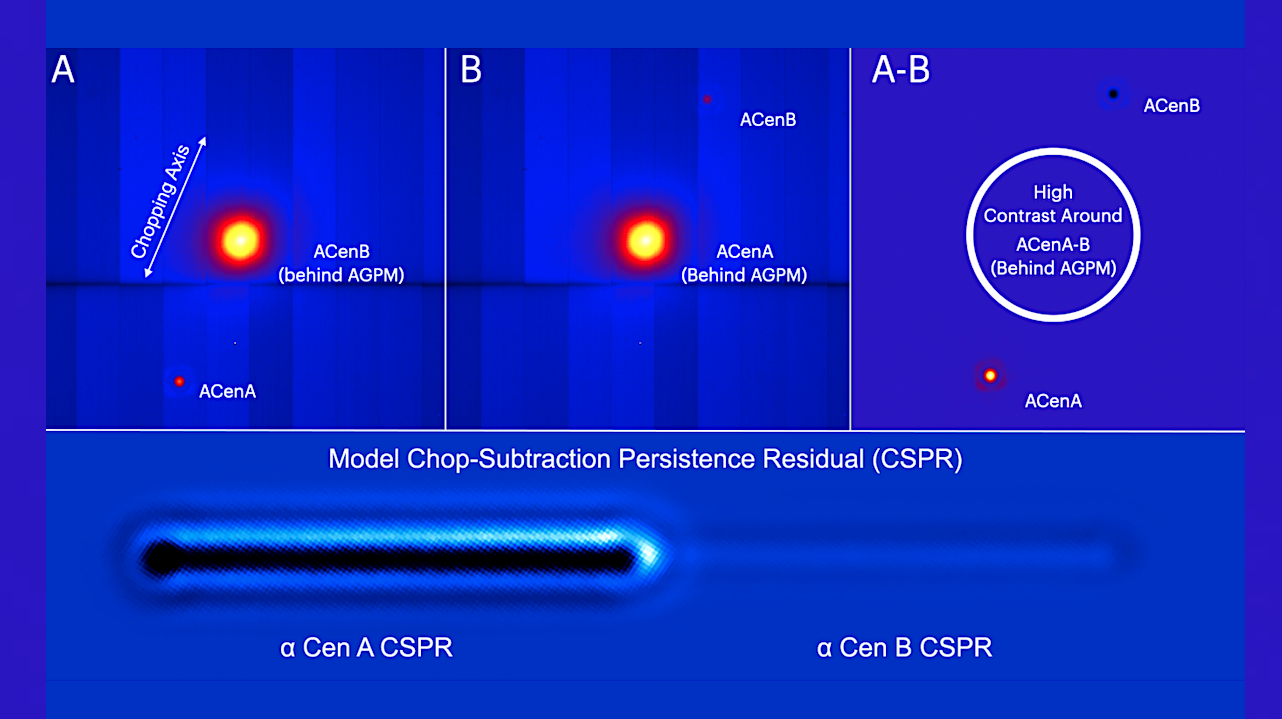

Top: an example of a chop-subtraction image pair from VLT/NEAR. Image B, following 0.05 sec after A, is subtracted to remove the detector bias, thermal background, AGPM glow, and excess low frequency noise (ELFN). Bottom: an example model of a chop-subtraction persistence residual (CSPR) of α Centauri AB. This model was generated with an offset of ∼2% of a pixel, or ∼1 mas, of the star’s position behind the coronagraph following each chop. The effects of the coronagraph, persistence non-linearity and temporal decay, and post-processing are not included in the model. The CSPR is too faint to be seen in the frames above, but is easily seen in longer integrations (see Fig. 2). — astro-ph.IM
Giant exoplanets on 10-100 au orbits have been directly imaged around young stars. The peak of the thermal emission from these warm young planets is in the near-infrared (~1-5 microns), whereas mature, temperate exoplanets (i.e., those within their stars’ habitable zones) radiate primarily in the mid-infrared (mid-IR: ~10 microns).
If the background noise in the mid-IR can be mitigated, then exoplanets with low masses–including rocky exoplanets–can potentially be imaged in very deep exposures. Here, we review the recent results of the Breakthrough Watch/New Earths in the Alpha Centauri Region (NEAR) program on the Very Large Telescope (VLT) in Chile.
NEAR pioneered a ground-based mid-IR observing approach designed to push the capabilities for exoplanet imaging with a specific focus on the closest stellar system, Alpha Centauri. NEAR combined several new optical technologies–including a mid-IR optimized coronagraph, adaptive optics system, and rapid chopping strategy to mitigate noise from the central star and thermal background within the habitable zone.
We focus on the lessons of the VLT/NEAR campaign to improve future instrumentation–specifically on strategies to improve noise mitigation through chopping. We also present the design and commissioning of the Large Binocular Telescope’s Exploratory Survey for Super-Earths Orbiting Nearby Stars (LESSONS), an experiment in the Northern hemisphere that is building on what was learned from NEAR to further push the sensitivity of mid-IR imaging.
Finally, we briefly discuss some of the possibilities that mid-IR imaging will enable for exoplanet science.
Kevin Wagner, Steve Ertel, Jordan Stone, Jarron Leisenring, Dániel Apai, Markus Kasper, Olivier Absil, Laird Close, Denis Defrère, Olivier Guyon, Jared Males
Comments: Submitted proceedings to SPIE Optical Engineering + Applications 2021, Techniques and Instrumentation for Detection of Exoplanets X
Subjects: Instrumentation and Methods for Astrophysics (astro-ph.IM); Earth and Planetary Astrophysics (astro-ph.EP)
Cite as: arXiv:2107.14378 [astro-ph.IM] (or arXiv:2107.14378v1 [astro-ph.IM] for this version)
https://doi.org/10.48550/arXiv.2107.14378
Focus to learn more
Submission history
From: Kevin Wagner
[v1] Fri, 30 Jul 2021 00:17:23 UTC (4,253 KB)
https://arxiv.org/abs/2107.14378
Astrobiology,
Stay Informed With the Latest & Most Important News
-
 012024 in Review: Highlights from NASA in Silicon Valley
012024 in Review: Highlights from NASA in Silicon Valley -
 02Panasonic Leica Summilux DG 15mm f/1.7 ASPH review
02Panasonic Leica Summilux DG 15mm f/1.7 ASPH review -
 03How New NASA, India Earth Satellite NISAR Will See Earth
03How New NASA, India Earth Satellite NISAR Will See Earth -
 04And Thus Begins A New Year For Life On Earth
04And Thus Begins A New Year For Life On Earth -
 05Astronomy Activation Ambassadors: A New Era
05Astronomy Activation Ambassadors: A New Era -
06SpaceX launch surge helps set new global launch record in 2024
-
 07Space Force plans new ‘Futures Command’ amid pressure to speed up modernization
07Space Force plans new ‘Futures Command’ amid pressure to speed up modernization












